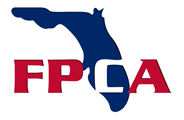The offsite manufacturing of precast building components is not always fully appreciated in today’s environment. The “in-and-out” approach of precast sometimes receives a negative view since other trades tend to spend more time on-site. However, with a closer look at the behind the scenes process and a full understanding of the high level of skill and quality involved in the design/manufacture of precast, the negative association is quickly laid to rest.
Typically, the offsite construction process involves the following steps:
-
First, the designers and precasters meet to discuss what is needed and how to create the precast components.
-
Next, precasters provide input to the designers who design the project using the desired precast elements.
-
After the design is approved, the precaster begins fabricating the components, sometimes using formliners to achieve the desired look.
-
Then, when the project schedule calls for the products, the precast is shipped from the precast plant to the site.
-
Finally, the precast arrives at the site and is erected in place.
Precast components are manufactured in quality-controlled plants. Many plants are PCI certified which involves a rigorous process with on-going annual inspections for quality adherence. This type of offsite process greatly reduces the amount of personnel and equipment that are necessary on the project site. While some overlapping of trades does occur on-site, it is generally limited to a few key individuals who follow COVID guidelines for safety.
Because PCI certified plants implement rigorous quality standards before/during/after the production process, any issues or mistakes at the precast plant are corrected long before the product ever reaches the job site. This high level of quality control reduces time spent on site fixing issues and equates to accelerated construction schedules.
Precast is a popular option for projects in urban areas or tight environments because the components arrive “just in time” for erection. Precast products do not need to be stored or held on project sites for long periods of time and they do not require a large staging area. This minimal use of space eases congestion in urban areas, as well as minimizes noise pollution and surrounding site disturbance.
Case Study
The Wekiva Parkway Interchange in Orange County, Florida involves eight precast concrete bridges. By using precast components, the eight bridges were constructed in less than a year and contributed to the acceleration of the overall project schedule.






